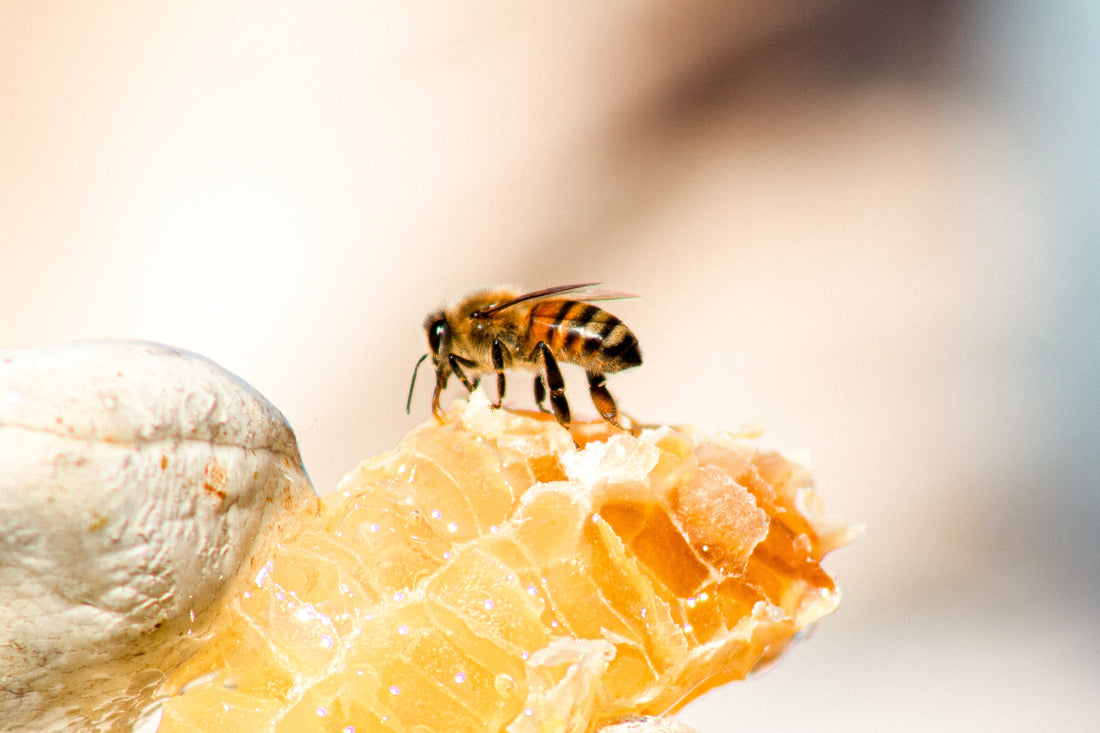
CRYSTALLIZED HONEY : EVERYTHING YOU NEED TO KNOW ABOUT
Share
HONEY CRYSTALLIZATION: IS GOOD OR BAD?
For some reason, there is a perception that honey that crystallizes has "gone bad" or that it is a sign of contamination. No! It's actually a sign of purity. Don't waste your crystallized honey, unless you like to waste delicious food.
Crystallization is a Natural Process. Raw & Cold-Extracted Honey has a natural tendency to crystallize over time with no effect on honey other than color and texture. Crystallization depends on the source of the nectar of the plant, from which honey bees used to produce the honey. Crystallization took place because honey is a supersaturated solution. This supersaturated state occurs because there is so much sugar in honey (more than 70%) relative to the water content (often less than 20%). Glucose tends to precipitate out of solution and the solution changes to the more stable saturated state
These factors make honey more likely to crystallize:
1. Temperature
Usually honey does crystallizes faster at low room temperature. Even honey in beehive may crystallize if the temperature goes below 50ºF (10ºC). Store your honey in a glass jar instead of plastic. Plastic is more porous than the glass. Moisture does encourage the crystallization process & the glass jar perform better job of keeping moisture out of your honey (as long as the lid is tightly closed).
2. The ratio of glucose and fructose in the honey
Honey is a supersaturated sugar solution made up of water & mix of sugars. Mostly sugars glucose (grape sugar/dextrose) & fructose (fruit sugar). These two sugars are the characteristics of the plants the bees get the nectar to produce the honey. If the glucose (grape sugar/dextrose) is higher than the fructose (fruit sugar) honey will crystallize more quickly. If the fructose (fruit sugar) is higher than the glucose (grape sugar/dextrose) honey will crystallize slowly. Fructose and glucose in honey varies from one type of honey to the other type. Most commonly fructose ranges from 30%-44% and glucose from 25%-40%. Balance of these two major sugars cause the crystallization and the comparative percentage of each determines honey will crystallize slowly or rapidly. What crystallizes is the glucose, due to its lower solubility. Fructose is more soluble than glucose from which honey remain fluid. Robinia & Sidr Honeys are high in fructose so crystallization is delayed in it. Orange, Ajwain, Black Forest & Multiflora crystallize more quickly because of high content of glucose.
3. Pollen
Pollen in honey recognizes from which plant the honey bees get the nectar from. Pollen also speeds up the crystallization process. Filtration slows down the crystallization process but we do not filter & process our honey, we keep it raw & unfiltered. Honey with pollen in it is great honey, but crystallization happens faster when there are small particles available to build on. Raw honey has a lot of those in the form of pollen grains. Pollen less honey is difficult to know where it came from, & from which source of nectar the bees produce it. Pollen in Honey assures, you are getting raw honey made by bees.
Crystallization can be stimulated by any small particles–dust, bits of wax or propolis, air bubbles–that are present in the honey. These factors are related to the type of honey and are influenced by how the honey is handled and processed. Storage conditions–temperature, relative humidity and type of container–may also influence the tendency of honey to crystallize.
Can Crystallization be avoided
Spontaneous crystallization is controlled primarily through proper storage, heating and/or filtering. Holding honey at temperatures in the range of 104–140 °F (40–71 °C) during bottling also slows the rate of crystallization. Mild heat treatment delays crystallization by dissolving crystals and flash heating to 140–160 °F (60–71 °C) dissolves crystals and expels incorporated air (which can also stimulate crystallization). Filtering removes particles that can act as nuclei that might initiate crystallization. Honey with a low glucose-to-water ratio is likely to remain liquid, avoiding crystallization.
Several Steps to De-Crystallize Honey
- Place the glass jar of crystallized honey into a bowl.
- Heat water to a warm but not boiling temperature using a kettle, instant pot, or another method. Keep in mind that putting raw honey in boiling water will destroy active enzymes, minerals and other properties.
- Pour the hot water into the glass bowl. Make sure the water line below the lid of the jar to prevent any leaks.
- Leave the jar of honey sitting in the water, until the honey starts to De-Crystallize. The length of time De-Crystallizing honey takes ultimately depends on the amount of honey we are liquefying.
